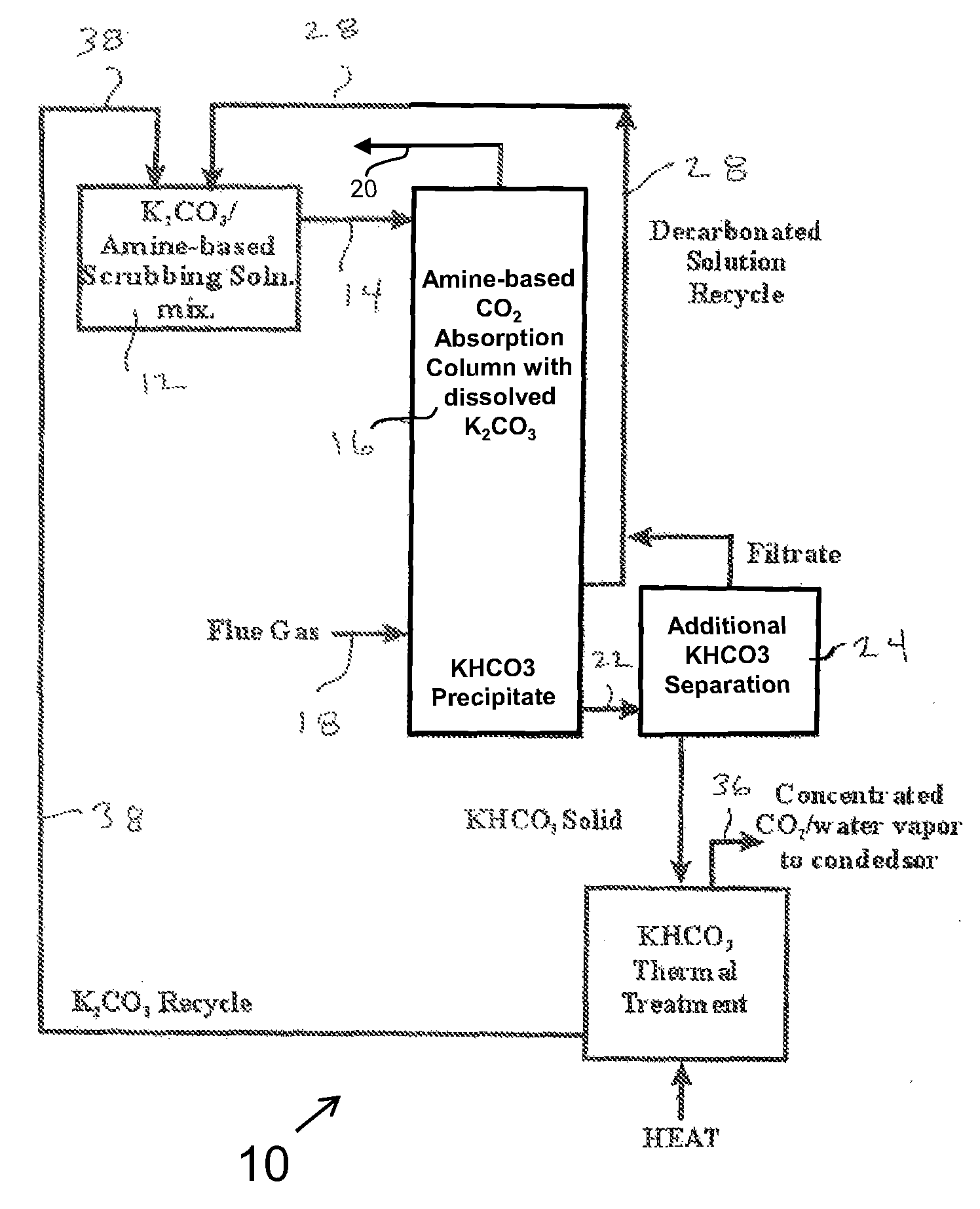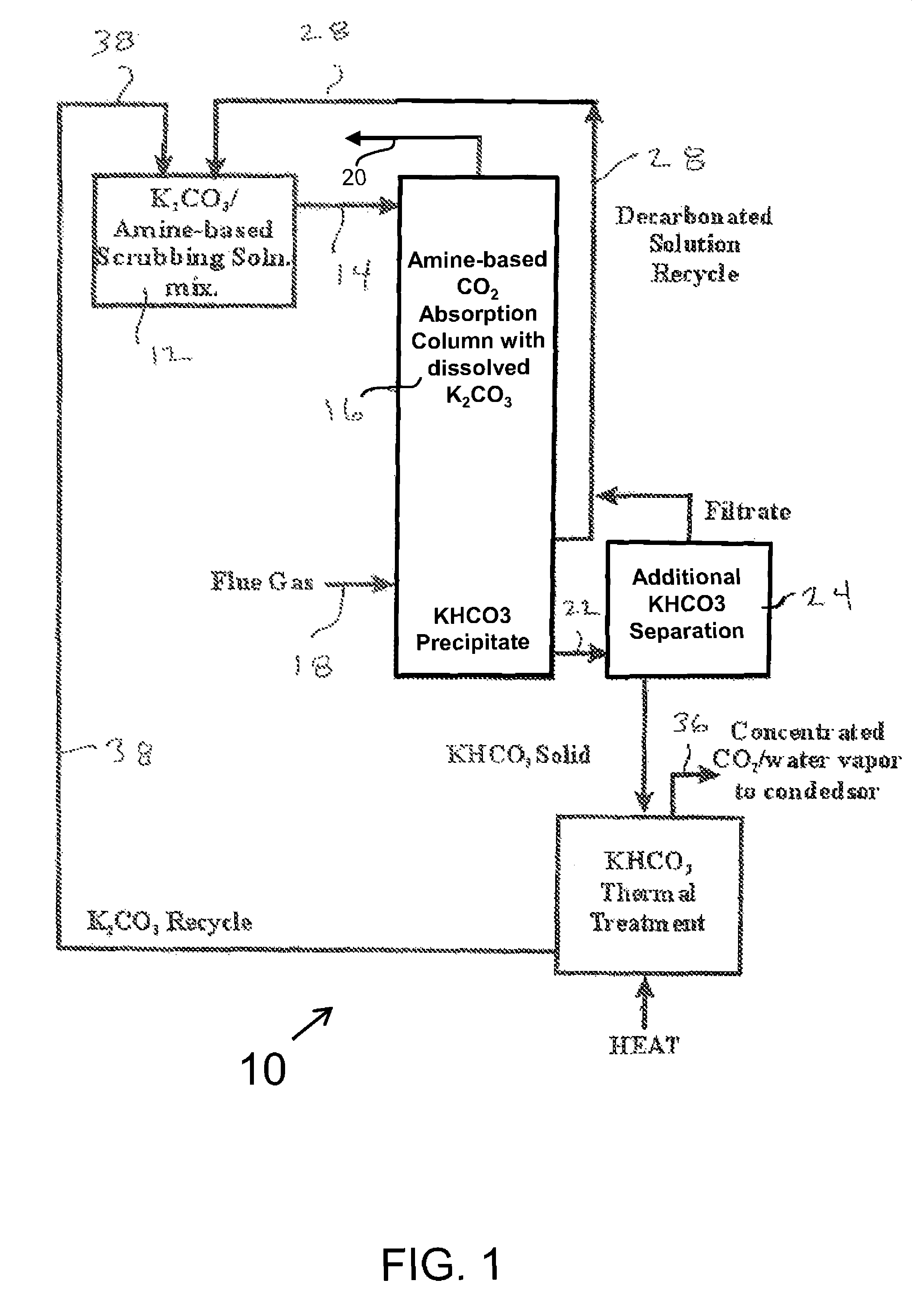CO2 separation from low-temperature flue gases
- Summary
- Abstract
- Description
- Claims
- Application Information
AI Technical Summary
Benefits of technology
Problems solved by technology
Method used
Image
Examples
example 1
Closed Loop CO2 Separation Via Phase-Separation Reagent with Thermal Regeneration and Amine Absorption Reagent with Chemical Regeneration
[0117]The inventors have found the dissolution of the phase-separating moiety in the first method to enable the ready mixing of carbon dioxide and the phase-separating moiety in a way that is independent of the surface area of the carbon dioxide-capturing moiety. This greatly increases the efficacy of the invention. In the first method, the phase-separating moiety is dissolved in water to which a basic scrubbing moiety is also added. The basic scrubbing moiety is conserved throughout the process of absorption and chemical regeneration.
[0118]Absorption and regeneration temperatures are given in Table 1 supra for compounds of potassium and sodium.
[0119]Heat energy for the regeneration of the phase-separating moiety can be taken from the exothermic scrubbing reactions as noted in Examples 1 and 2 infra and from low-grade steam from the power plant its...
example 2
Once-Through Carbonation of Waste Materials
[0125]Reactions similar to those with NaHCO3 and KHCO3 were carried out employing a 20 percent (mass percent) solution of MEA in water and reagent-grade calcium hydroxide (Ca(OH)2) (solubility of 0.185 grams (g) / 100 cubic centimeters (cm3) of water at 0° C.). Separately, reactions were carried out with a 20 percent (mass percent) solution of MEA in water and CaO / Ca(OH)2-bearing waste materials such as waste cement or fly ash. (The solubility of calcium oxide is 0.131 g / 100 cm3; however, CaO reacts with water and is converted to Ca(OH)2.) The particle sizes ranged between 230 and 200 mesh, 63 and 75 micrometers (μm) respectively.
[0126]In a manner similar to that of Example 1 supra, carbon dioxide was loaded for 10 min at a rate of approximately 3 L / min into approximately 80 mL of 20 percent aqueous MEA (mass percent) with the occurrence of mild heat generation. The solids were partially suspended as a result of sparger turbulence, but active...
PUM
| Property | Measurement | Unit |
|---|---|---|
| Fraction | aaaaa | aaaaa |
| Particle size | aaaaa | aaaaa |
| Particle size | aaaaa | aaaaa |
Abstract
Description
Claims
Application Information
 Login to View More
Login to View More - R&D
- Intellectual Property
- Life Sciences
- Materials
- Tech Scout
- Unparalleled Data Quality
- Higher Quality Content
- 60% Fewer Hallucinations
Browse by: Latest US Patents, China's latest patents, Technical Efficacy Thesaurus, Application Domain, Technology Topic, Popular Technical Reports.
© 2025 PatSnap. All rights reserved.Legal|Privacy policy|Modern Slavery Act Transparency Statement|Sitemap|About US| Contact US: help@patsnap.com



